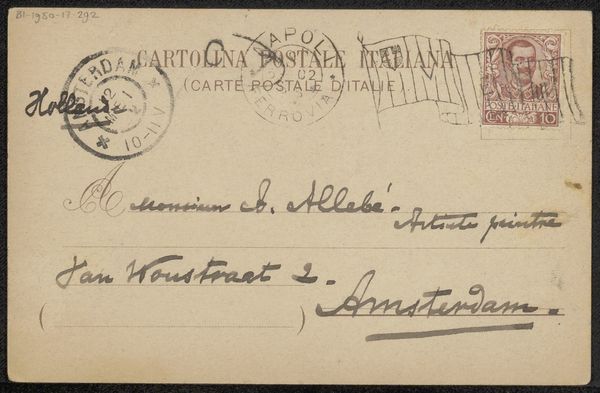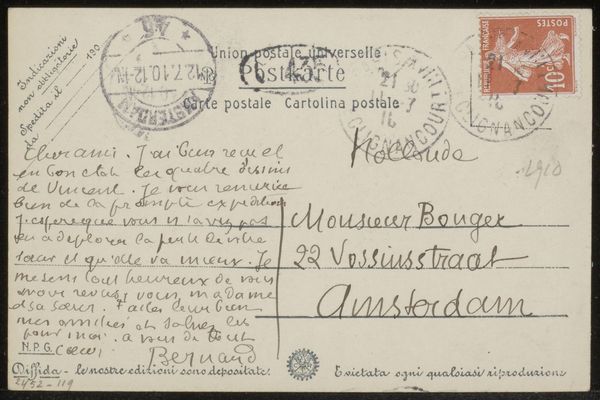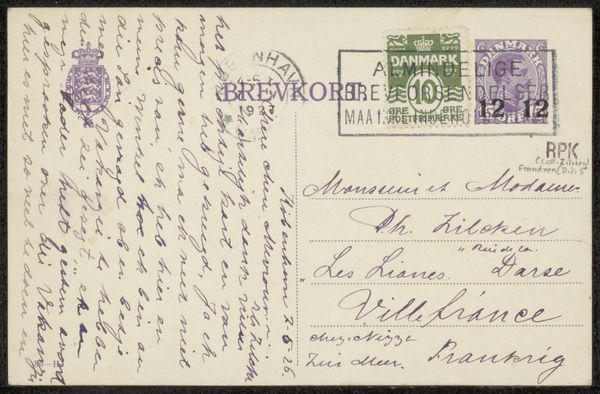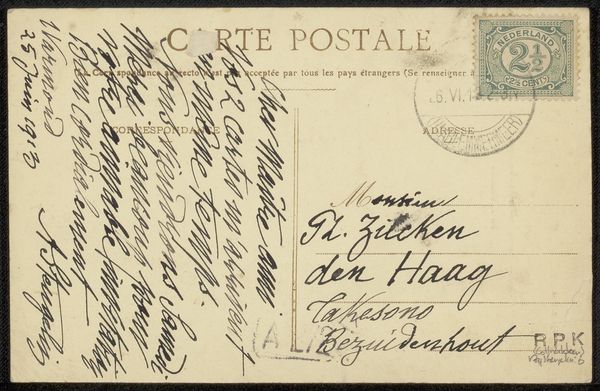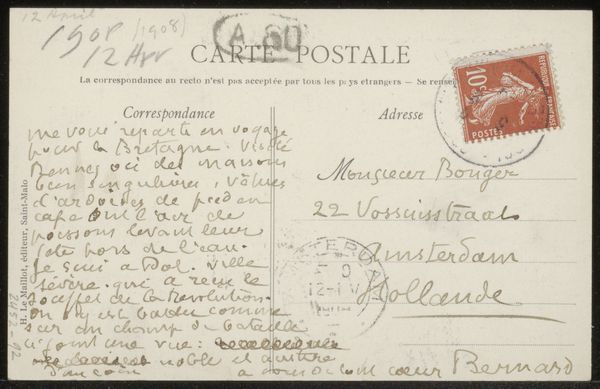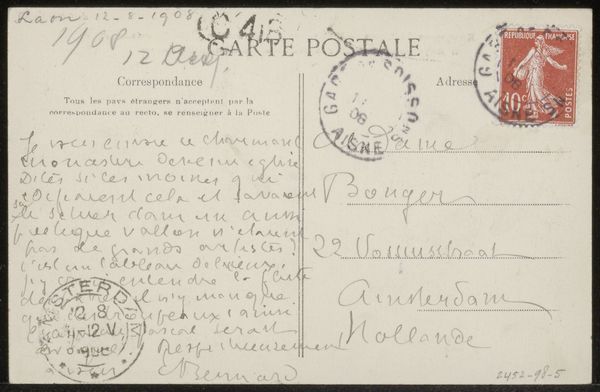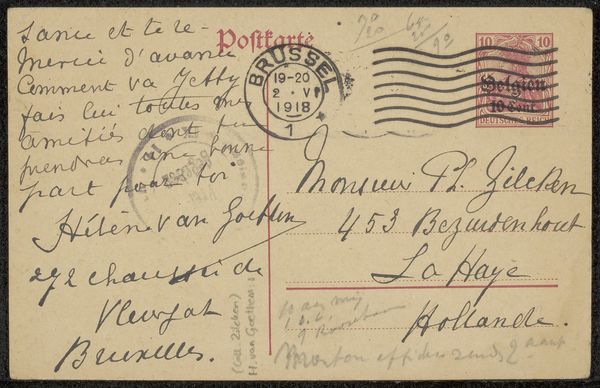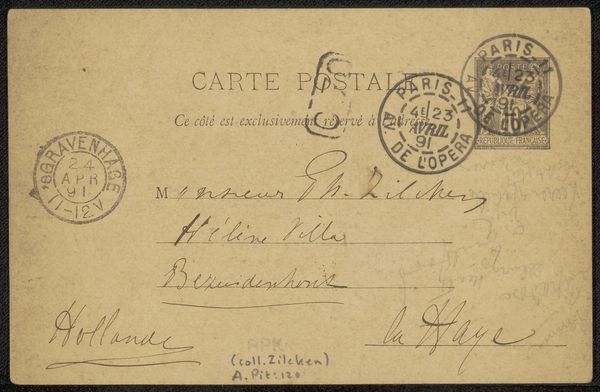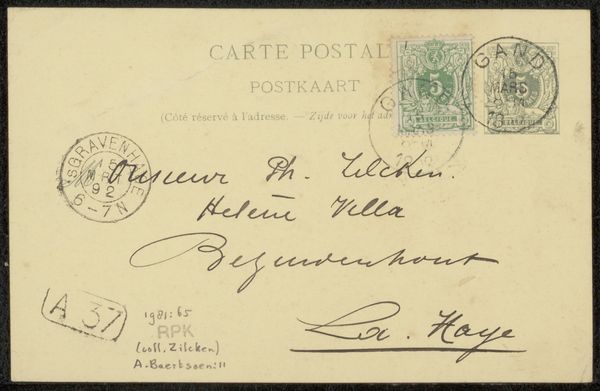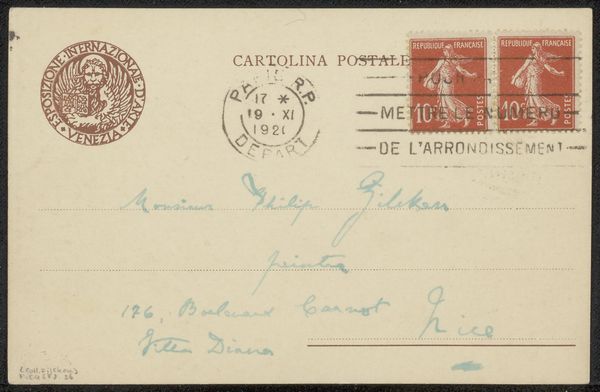
drawing, ink, pen
#
drawing
#
pen drawing
#
ink
#
pen
Copyright: Rijks Museum: Open Domain
Editor: So, we're looking at "Briefkaart aan Philip Zilcken" – that's "Postcard to Philip Zilcken" – possibly from 1919, made by Alphonse Stengelin, using pen and ink. It's… well, it’s just a postcard. What can we learn from such a humble object? Curator: Precisely, the beauty lies in its humility. It's not some grand oil painting meant to inspire awe, but an everyday artifact produced and consumed. Consider the materiality: the paper pulp, the ink formulation. These aren’t neutral – they're products of specific industrial processes, linked to labor practices of the time. The stamps themselves, printed by a mechanized system, speak volumes about postal infrastructures and national identity. Editor: So, it's about understanding the system that allowed this message to travel? What about the handwritten note? Curator: Absolutely! The handwriting itself is crucial. Whose labor was involved in creating that script? The postal worker sorting it, the recipient reading it, the artist’s hand creating it. Were they factory-made pens or carefully handcrafted quills dipped in hand-mixed ink? Who was the message from, who made it and to what degree. Also consider the relationship between the handwritten message and the printed elements on the postcard; are these combined efforts intended to invoke mass consumption? Are these combined efforts supposed to evoke certain sentimental values in the individual user of this object? Editor: So it's really about breaking down the whole process – the labor, the materials, and the consumption of something as simple as a postcard. Curator: Precisely! It allows us to challenge these binaries between fine art and everyday life by thinking deeply about material practices. It challenges assumptions around fine art. Editor: I never thought I could look at a simple postcard and find so many avenues for interpreting it, considering who was involved in the production, distribution and meaning behind the text! Curator: Now imagine doing that for every object.
Comments
No comments
Be the first to comment and join the conversation on the ultimate creative platform.
